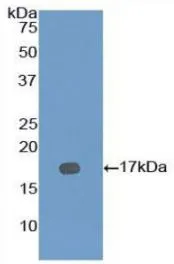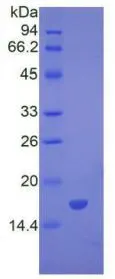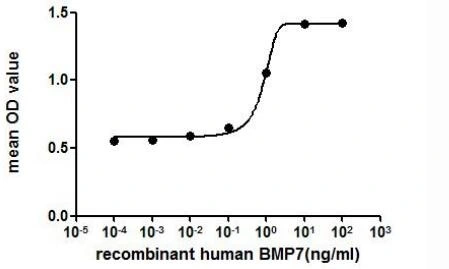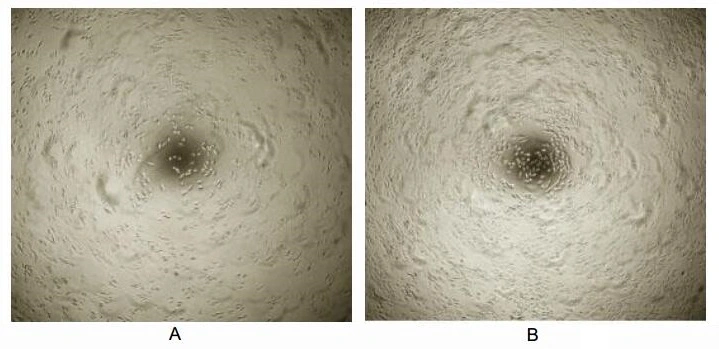
WB analysis of GTX00296-pro Mouse BMP7 protein (active).
Mouse BMP7 protein, His tag (active)
GTX00296-PRO
ApplicationsFunctional Assay
Product group Proteins / Signaling Molecules
Protein IDP23359
Overview
- SupplierGeneTex
- Product NameMouse BMP7 protein (active)
- Delivery Days Customer9
- Application Supplier NoteBMP7 (Bone morphogenetic protein 7), which belongs to the TGF-beta superfamily, is a signaling molecule with the ability to promote bone formation. BMP7 has also been implicated in various types of cancer, including breast cancer. It has been reported that BMP7 treatment induced cell growth promotion of MDA-MB-231 breast cancer line. To test the effect of BMP7 on cell proliferation, MDA-MB-231 cells were seeded into triplicate wells of 96-well plates at a density of 2000 cells/well and allowed to attach overnight, then the medium was replaced with serum-free standard DMEM prior to the addition of various concentrations of BMP7. After incubated for 72h, cells were observed by inverted microscope and cell proliferation was measured by Cell Counting Kit-8 (CCK-8). Briefly, 10 microl of CCK-8 solution was added to each well of the plate, then the absorbance at 450nm was measured using a microplate reader after incubating the plate for 1-4 hours at 37C. The dose-effect curve that BMP7 significantly promoted cell proliferation of MDA-MB-231 cells. The ED50 for this effect is typically 3. 483-9. 017 ng/ml.
- ApplicationsFunctional Assay
- CertificationResearch Use Only
- ConjugateUnconjugated
- Protein IDP23359
- Protein NameBone morphogenetic protein 7
- Scientific DescriptionThis gene encodes a secreted ligand of the TGF-beta (transforming growth factor-beta) superfamily of proteins. Ligands of this family bind various TGF-beta receptors leading to recruitment and activation of SMAD family transcription factors that regulate gene expression. The encoded preproprotein is proteolytically processed to generate each subunit of the disulfide-linked homodimer. Mutation of this gene results in skeletal, kidney, and other developmental defects. [provided by RefSeq, Jul 2016]
- Storage Instruction-20°C or -80°C,2°C to 8°C
- UNSPSC12352202



